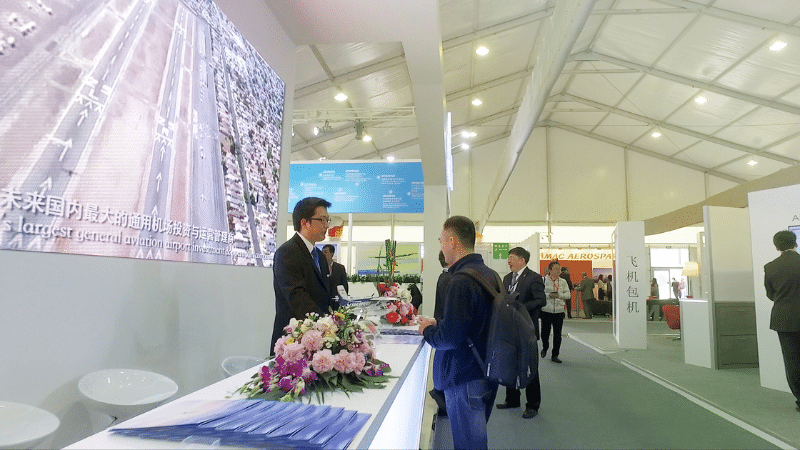Exhibiting at a trade show? Here are six easy ways to customize your booth for attendees
Attract and engage key audiences at your booth and beyond with powerful personalization strategies
There’s a change happening on the exhibit floor. Today’s trade show participants come to the exhibit floor armed with information. They’ve done their homework. They know what problem they want to solve or which products they want to demo. They’ve researched products online, asked colleagues their opinions, read or posted questions on user boards, and used the event’s online planner to mark the exhibitors they want to see. They are less likely to walk every aisle window shopping. So in this new paradigm, what can you do to attract attendees and ultimately engage your target audience?
The answer is personalization.
The more you can show your booth visitors that you know what their challenges are, what they need to learn about, and their goals for the exhibit floor, the more you can reframe your interaction around specific needs. This results in better engagements, quality conversations, more qualified leads, and increased ROI. Ready to personalize your in-booth experience? Here are six cost-effective ways to increase customization while driving engagement:
Know the attendees
You choose to exhibit at a specific trade show because you understand that, in general, your target audience will also be there. But not every audience member has the same needs.
Think about the types of people attending, and what they came to the exhibit floor to see and learn. A C-level attendee does not have the same interests as a middle manager or technical specialist. Don’t treat them the same way or expect them to dig through all the information in your booth to find their desired content. Look at the demographic information in the conference prospectus. What are the titles of the attendees? What types of organizations do they work for?
If the information is not in the prospectus, chances are the show organizer has the information from a post-event survey. Ask the show organizer if they have data on the attendees. See if they can offer insights into personas, interests, preferences, and more. With this information in mind, you can adjust your in-booth experience or pitch to better meet those needs. Brush up on information about your key clients and prospects and show up prepared to discuss their personalized needs.
Organize content by need
Frequently, exhibitors organize their booth by products. While sometimes that is efficient, organizing your booth by solutions can be more helpful to attendees. C-levels are looking for insights into the future and inspiration. Have a space that is about future products, not just the products they already rely on, and make those products available to learn about and purchase.
For current clients or end users, provide an educational area for attendees who are looking for help as well as other audience members seeking products to solve their problems. Don’t forget about your touch-screen content. It’s unlikely that attendees want to spend time looking through information on all your solutions. Have specific touch screens for specific topics.
Start personalizing pre-conference
Use your pre-show communication to identify exactly which individuals want to discuss. When sending out invitations to meetings or in-booth presentations, ask questions on the RSVP. Keep that information on hand so that when the attendee comes by the booth, you can immediately engage him or her with conversations about their particular challenges and opportunities.
Increase traffic with personalized experiences
Creating unique experiences is a great way to attract attendees. Augmented reality, games, demos, and other interesting experiences draw traffic. These activities can be used to identify the attendee’s persona and needs level. Have activities that allow attendees to self identify. It can be a quiz, a choice of augmented reality experiences, or simply questions asked by crowd gatherers. Once the attendee’s persona is identified, sales reps know how to engage with the attendee and direct them to the products or area of the booth that will fulfill their needs.
If budget allows, try incorporating some technology into your booth to track and capture your own attendee data. Using a second screen product on an iPad within your booth can help you collect stats on most popular topics. Incorporate interesting elements that change based on attendee preference, like monitor content or even various colors of uplighting, to create ownership and interest. Ask the show organizer if they offer a beacon strategy so you can push out custom messages to attendees when they pass by your booth. You can even create an interactive digital installation, like a photo booth or graffiti wall, which boosts engagement while also creating opportunities to capture key data.
No matter which tactic you take, make sure it ladders up to your overarching show and marketing strategy — nothing is worse then technology for technology’s sake!
Interact at the attendee pace
Not everyone wants to immediately engage with a sales rep. Many attendees are more comfortable when they can explore a bit on their own. Incorporate a self-guided interaction within your exhibit booth so that attendees can learn about your products and services on their own terms. This could include an iPad or digital monitor driving a “choose your own adventure” presentation or, for larger booths, a physical tour around the space. By monitoring what the attendees are most attracted to, your booth staff can customize the conversation to focus on those specific things. Clearly identify content sections so that the self-guided tour doesn’t become a scavenger hunt for the information the attendee needs.
Customize follow-ups
Ensure you have a solid data collection strategy for your trade show (a CRM system, badge scanner, or something more robust) and use that data to create unique and custom follow-ups. Send attendees information based on their preference(s), not a blanket recap of everything you offer. Memorialize everything you have learned about the individual so that your sales team can access it before making a sales call or visit. When sales can start from a position of knowledge, you can help effectively shorten the sales cycle.
Let’s Get Started
Reach out and request a consultation.


